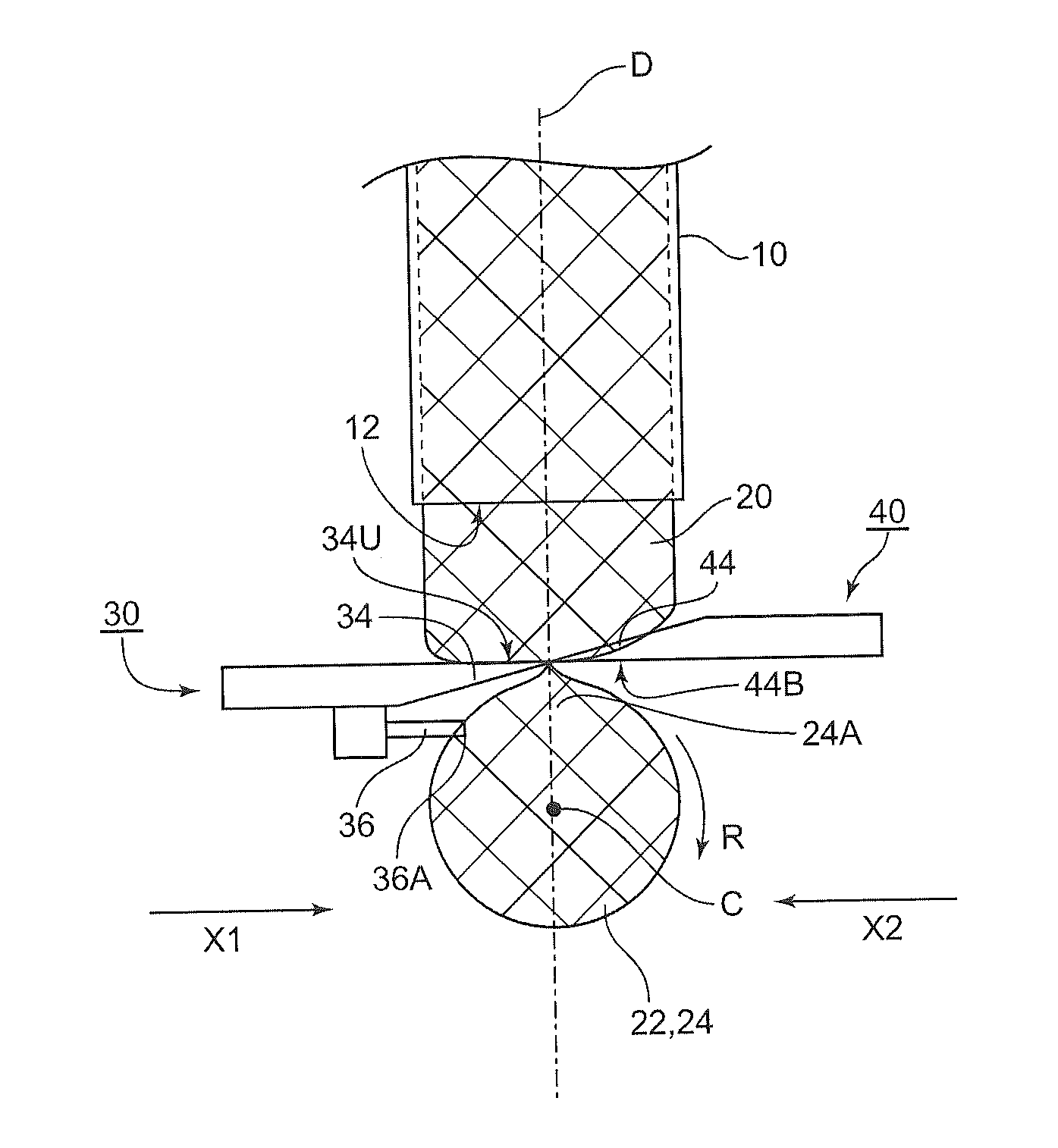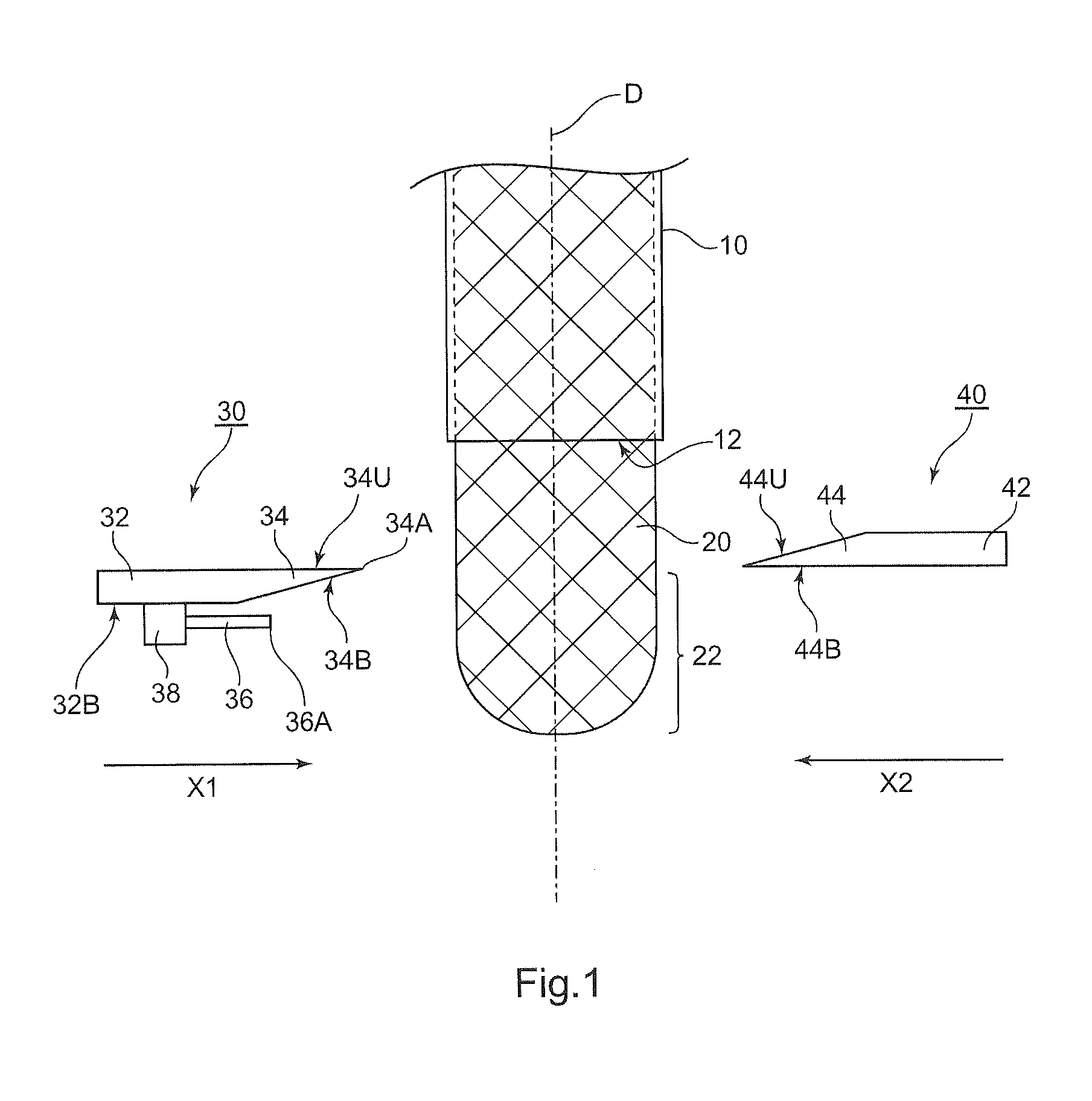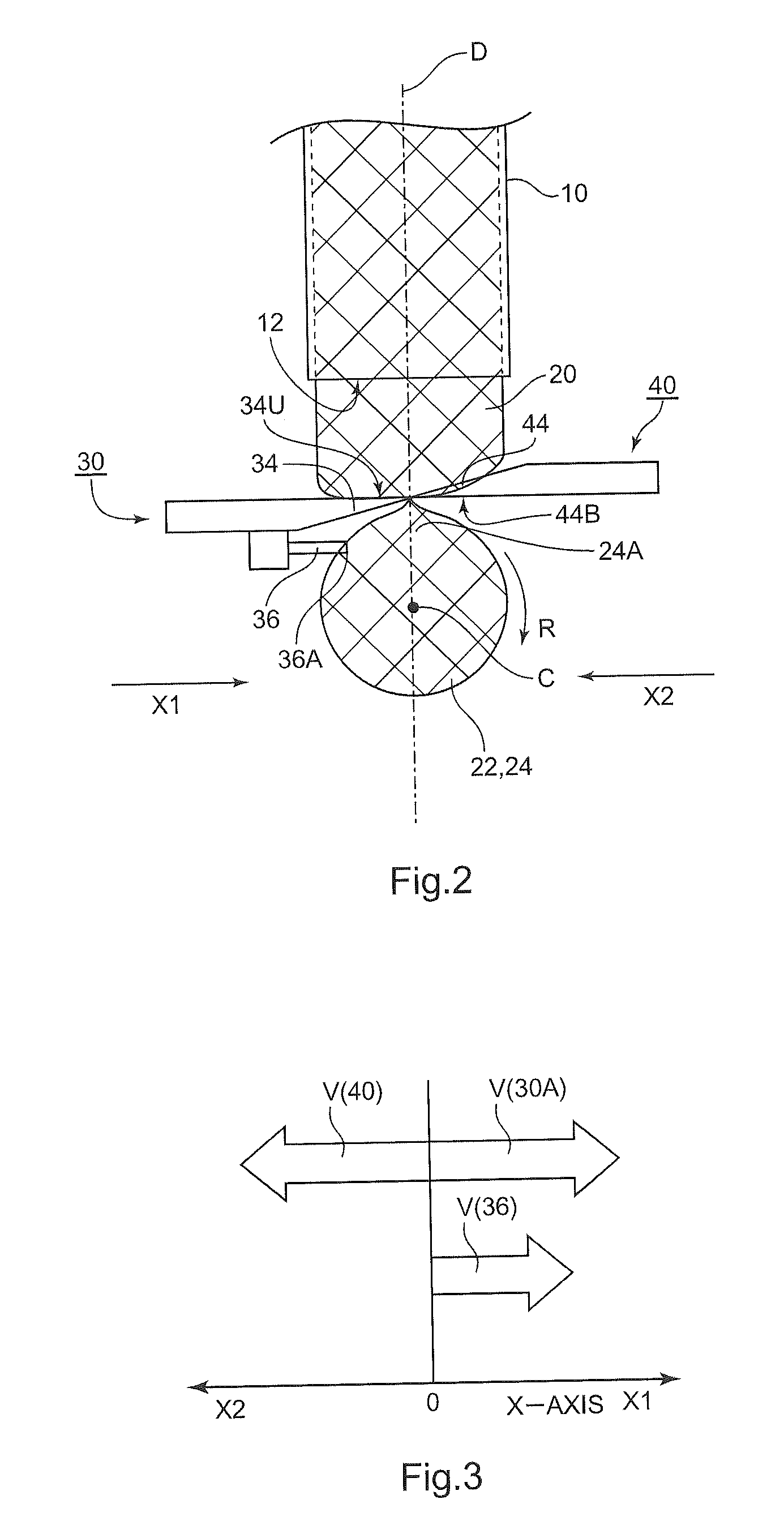Method for manufacturing glass blank, method for manufacturing magnetic recording medium substrate and method for manufacturing magnetic recording medium
a technology of magnetic recording medium and manufacturing method, which is applied in the direction of glass making apparatus, glass rolling apparatus, manufacturing tools, etc., can solve the problems that the patent literature 1 does not disclose the kind of polishing step that can be diminished or eliminated, and achieves small thickness deviation and good flatness
- Summary
- Abstract
- Description
- Claims
- Application Information
AI Technical Summary
Benefits of technology
Problems solved by technology
Method used
Image
Examples
first embodiment
[Method of Manufacturing Glass Blank]
[0068]A method of manufacturing a glass blank according to a first aspect of the present invention includes at least: forming a molten glass gob by separating a forward end portion of a molten glass flow flowing out continuously; and after the forming of the molten glass gob, press-molding the molten glass gob dropping down with a first press mold and a second press mold arranged facing each other in a direction crossing a direction in which the molten glass gob drops down. Here, the press-molding is carried out so that the molten glass gob is brought into contact with at least one molding surface selected from a molding surface of the first press mold and a molding surface of the second press mold facing a separation mark, which is formed on a surface of the molten glass gob during the separating of the forward end portion of the molten glass flow, under a state in which the separation mark faces the at least one molding surface, and one sheet o...
second embodiment
[Method of Manufacturing Glass Blank]
[0181]A method of manufacturing a glass blank in the second embodiment includes separating a molten glass gob from a molten glass flow flowing out from a glass outlet and press-molding the molten glass gob into a thin flat glass by using press molds, thereby manufacturing a glass blank to be processed into a magnetic recording medium substrate having a central hole, in which the molten glass gob is separated and falls, and the molten glass gob in the air is pressed with press-molding surfaces facing each other, thereby molding the molten glass gob into the thin flat glass, and the direction of the molten glass gob is changed so that the site at which the molten glass gob is separated from the molten glass flow faces one of the press-molding surfaces, followed by the start of the pressing.
[0182]The method of manufacturing a glass blank in the second embodiment is hereinafter described with reference to the drawings. FIG. 13 illustrates how a molte...
examples of first aspect
OF THE PRESENT INVENTION
[0265]Hereinafter, the first aspect of the present invention is described in more detail based on examples, but the first aspect of the present invention is not limited to the following examples.
Example 1
—Manufacture and Evaluation of Glass Blank—
[0266]Materials such as oxides, carbonates, nitrates, and hydroxides were weighed and mixed enough, yielding each blended material, so that glass having each of the compositions listed in Table 1 is obtained. The blended material was fed into a melting tank in a glass melting furnace, was heated, and was melt. The resultant molten glass was transferred from the melting tank to a fining tank, and bubbles were removed in the fining tank. Further, the molten glass was transferred to an operation tank, was stirred and homogenized in the operation tank, and was caused to flow out from a glass effluent pipe provided in the bottom portion of the operation tank. The melting tank, the fining tank, the operation tank, and the...
PUM
| Property | Measurement | Unit |
|---|---|---|
| angle | aaaaa | aaaaa |
| angle | aaaaa | aaaaa |
| angle | aaaaa | aaaaa |
Abstract
Description
Claims
Application Information
 Login to View More
Login to View More - R&D
- Intellectual Property
- Life Sciences
- Materials
- Tech Scout
- Unparalleled Data Quality
- Higher Quality Content
- 60% Fewer Hallucinations
Browse by: Latest US Patents, China's latest patents, Technical Efficacy Thesaurus, Application Domain, Technology Topic, Popular Technical Reports.
© 2025 PatSnap. All rights reserved.Legal|Privacy policy|Modern Slavery Act Transparency Statement|Sitemap|About US| Contact US: help@patsnap.com



